This document discusses the growing adoption of container-based platforms as a service (PaaS) solutions in the telecommunications industry. It notes that traditional virtual machine-based network function virtualization and software defined networking solutions are facing scalability issues. Container technologies are poised to help telcos deploy network functions and applications more efficiently at scale. The document proposes a container-based telco app orchestration mechanism using Apache Mesos to deploy containers adhering to quality of service requirements. Overall, the shift to container-based approaches can help telcos overcome limitations of current virtualization methods and better optimize resource utilization.
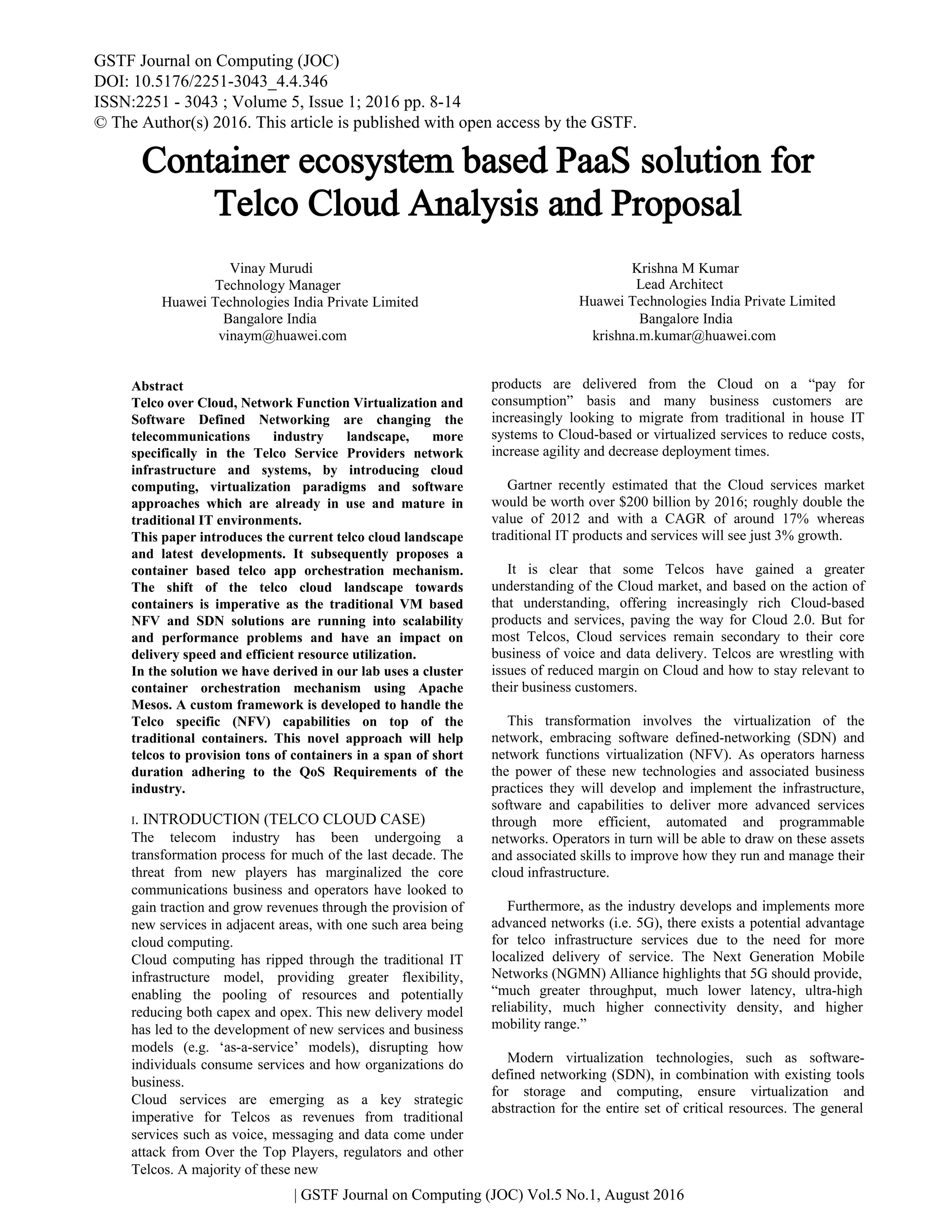
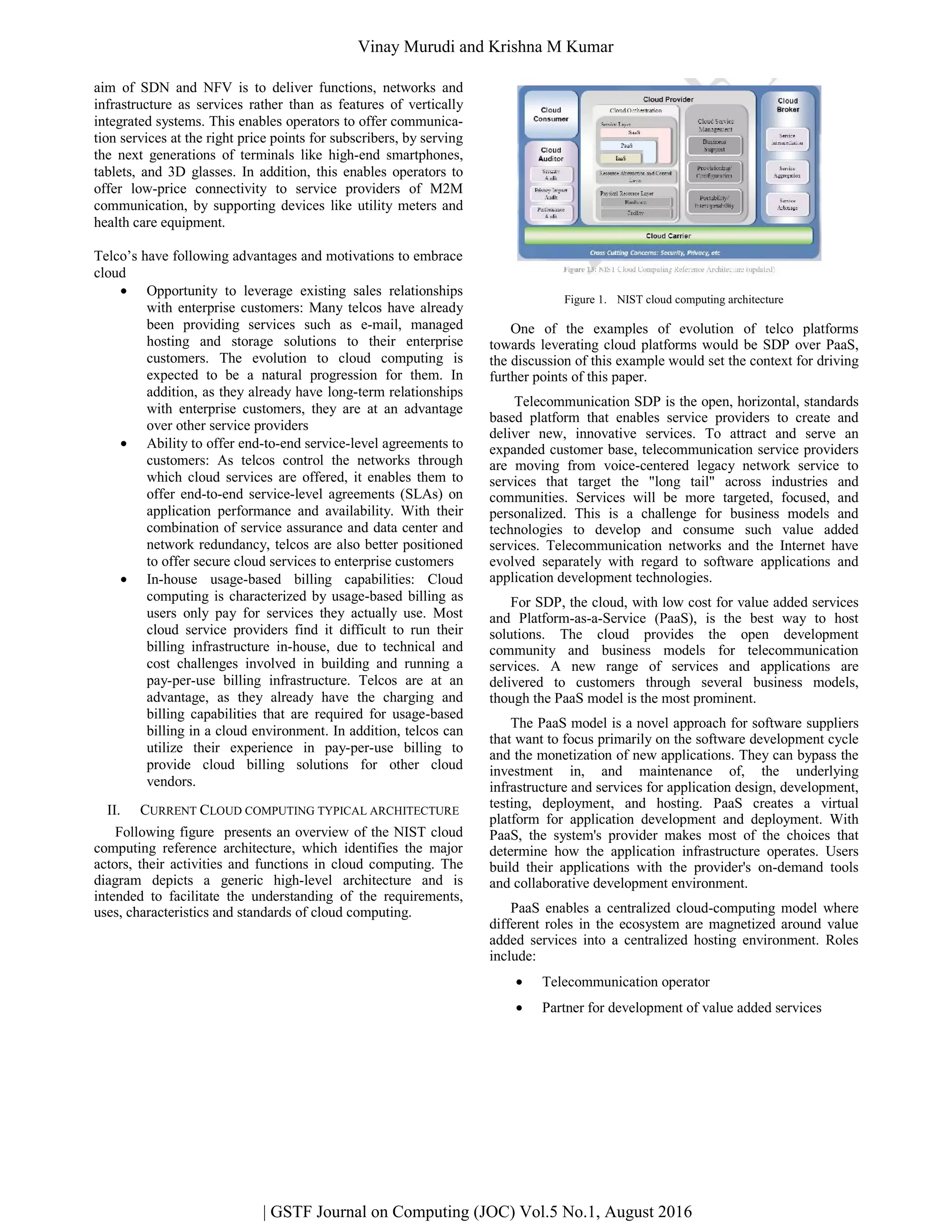
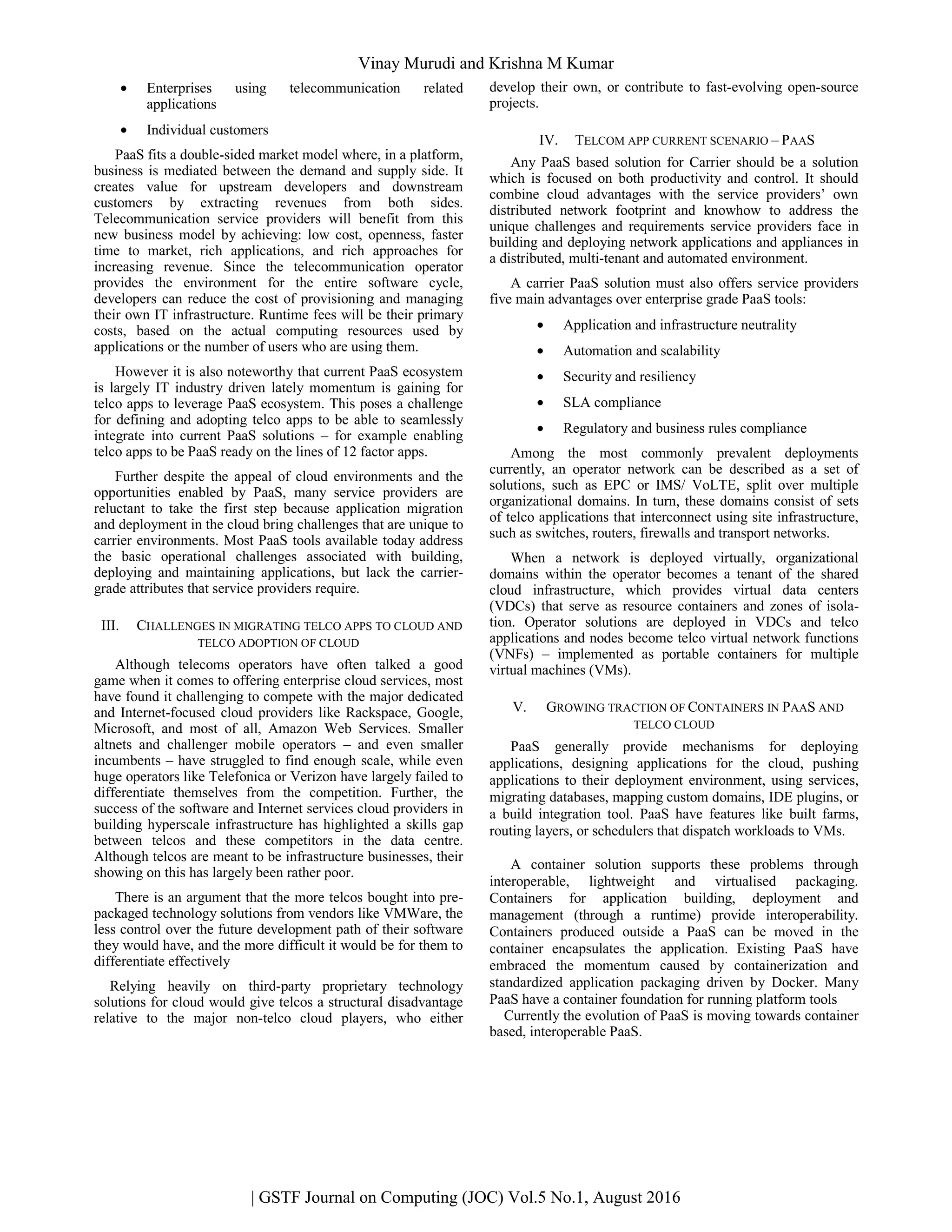
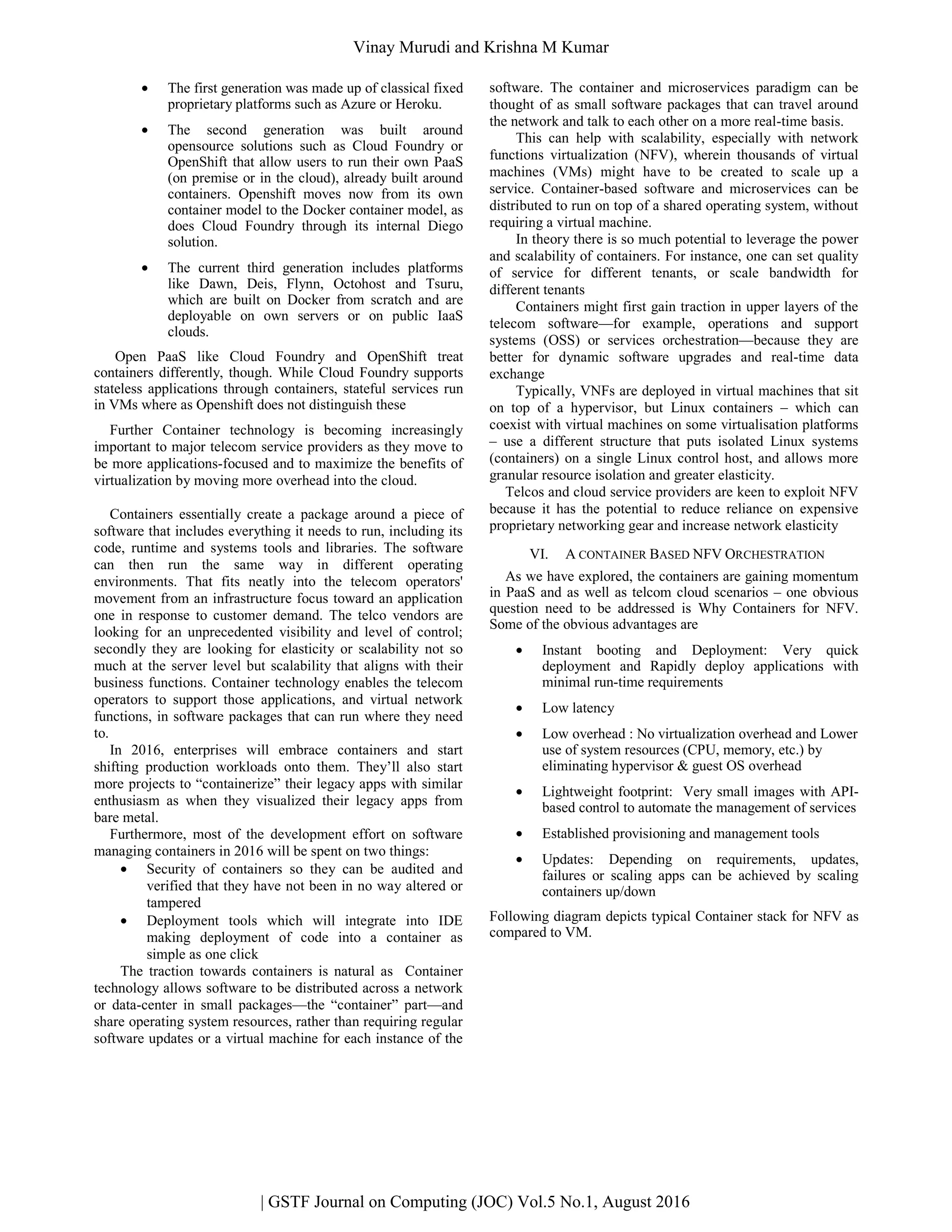
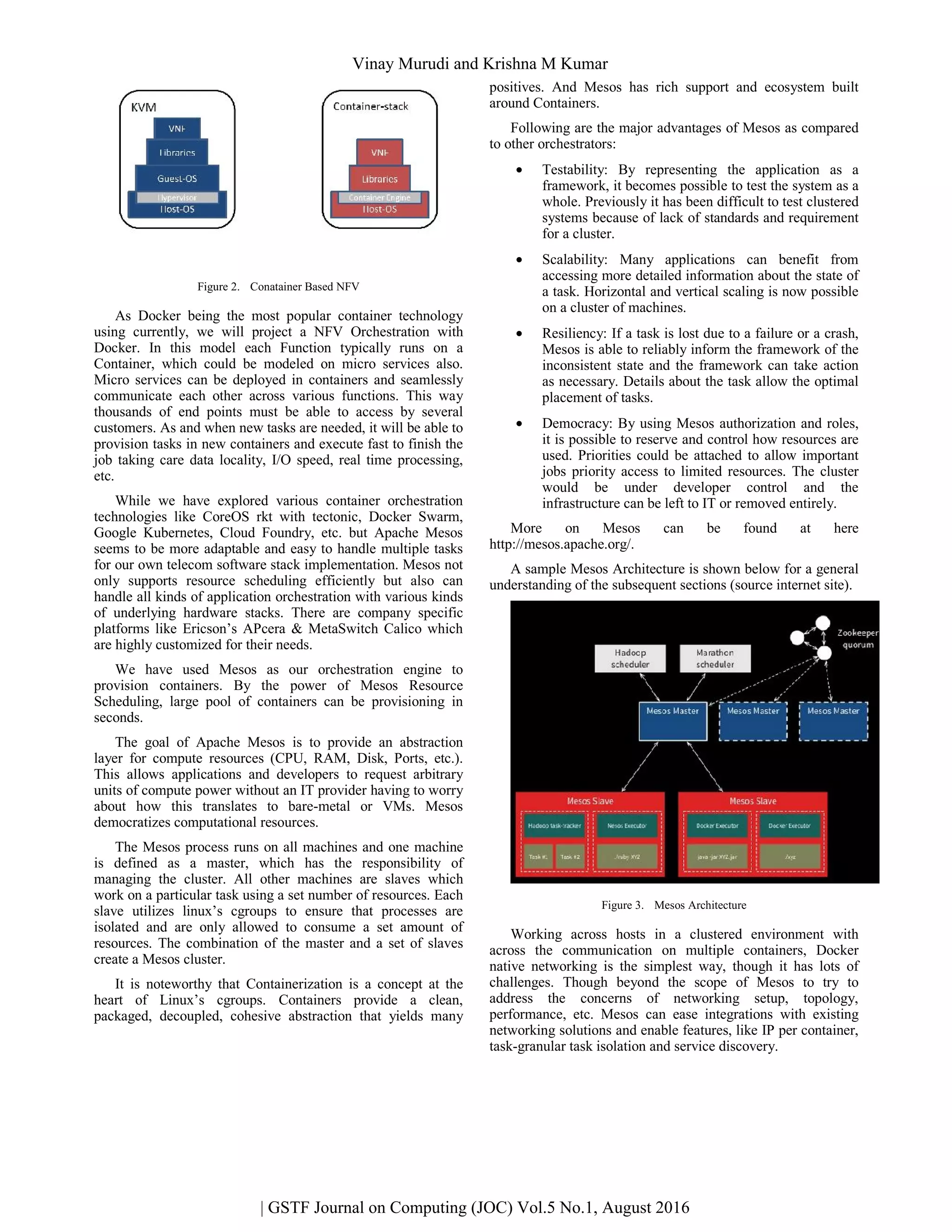
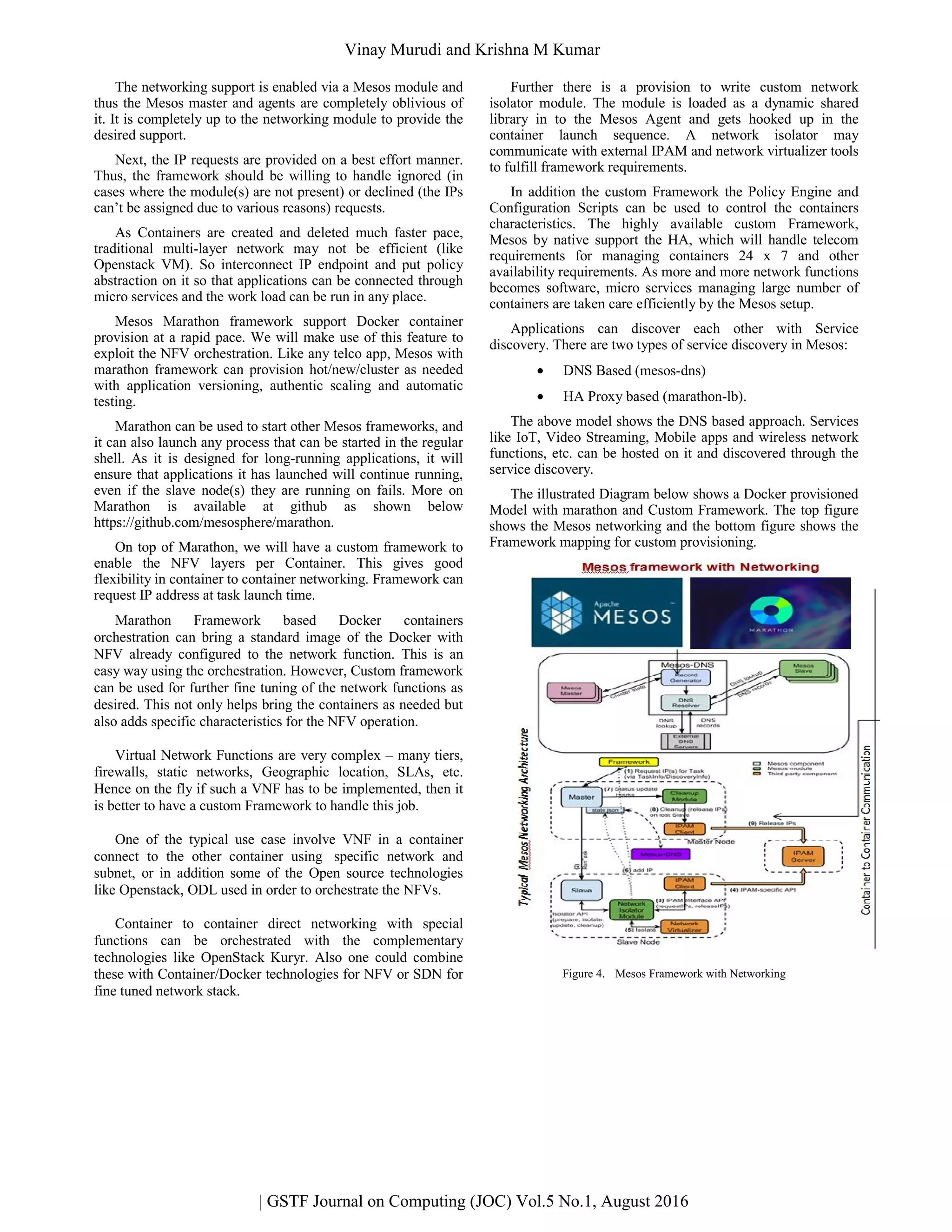
![Figure 5. Mesos Custom Framework for NFV Orchestration
We have modeled the standard NFV orchestration within a
container as highlighted in the diagram above. NFV is the
software implementation of the Network Function. The
functions are accessed through end points and there could be
nested services in the case of multiple functions case.
Typical operations include instantiation, update, scaling,
query, monitoring, fault diagnostics, healing, and termination.
Mesos by native supports several of these functions and on top
of that custom Framework can manipulate to handle all the
necessary items.
For the multi cluster large scale deployment the higher
layer management tool composed of VNF Manager and
Orchestration Manager will help to monitor and understand the
health of the deployment.
Telecom industry needs predictable performance,
Reliability and security as some of the key components of
deployment. Typical NFV use case is virtualization of CDN
(all network functionality will be virtualized). There are three
ways the things could be accomplished:
• IaaS – Container based infrastructure for NFV
• PaaS - Virtual Network Platform
• SaaS – Network function access
The model we mention above could falls in to any of the
above three; but more inclined towards the the PaaS layer as
standard APIs between modules can be used to manage the
entire application flow. Also the custom framework could be
enhanced further to handle much more sophistication like QoS,
etc. as needed.
In addition to the custom framework mentioned above, we
also have created a framework for caching service (Redis
framework for Mesos) to speed up the provisioning of large
clusters for high speed data retrieval. Enabling caching with
Mesos, we can seamlessly and efficiently manage the cloud
resources required by a globally scalable NoSQL database,
along with all kinds of telecom apps like IoT enablers, Mobile
wireless, etc.
OpenNFV has done some good work in terms of creating
overall NFV framework by building NFV infrastructure
(NFVI) and Virtualized Infrastructure Management (VIM).
NFV & SDN are complementary technologies, the way things
are described here are keeping in NFV focus. Similar approach
can be used to implement SDN solutions in containers with
some customization as needed which is supported by our
Framework. SDN on containers are under exploration in our
lab and further study will be published later.
CONCLUSION
Spearheaded by the IT industry, a shift toward providing
everything as a service is taking place. Adopting a similar
approach for network functions is one of the ways for telco
operators to expand the infrastructure and offered services.
This paper presents a model based on container
technologies which shall enable telcos to adapt to cloud
ecosystem well and leverage on its advantage, hence meet ever
growing demands of innovative services by subscribers and
customers.
The approach we mentioned is a novel idea using the
Apache Mesos Framework to provision customized NFV
containers to scale the system for telcos.
In this approach, we can make use most of the standard
technology available with Mesos and need only some minor
specific customization to meet our demand. Further scope of
the project is been explored in our lab including integrated
SDN/NFV solutions at containers ranging 10000 and above.
REFERENCES
[1] Fang Liu, Jin Tong, Jian Mao, Robert Bohn, John Messina, Lee
Badger and Dawn Leaf “ NIST Cloud Computing Reference Architecture”
[2] Benjamin Hindman, Andy Konwinski, Matei Zaharia,A li Ghodsi,
Anthony D. Joseph, Randy Katz, Scott Shenker, Ion Stoica “Mesos: A
Platform for Fine-Grained Resource Sharing inthe Data Center”
[3] D. Bernstein, "Containers and Cloud: From LXC to Docker to
Kubernetes," IEEE Cloud Computing,vol.1, no. 3, pp. 81-84, 2014.
[4] N. Kratzke, “A Lightweight Virtualization Cluster Reference
Architecture Derived from Open Source PaaS Platforms”, Open Journal of
Mobile Computing and Cloud Computing vol. 1, no. 2, 2014
[5] Telco and Cloud Service Provider Predictions for 2016 -https://
www.flexiant.com/2016/01/07/5-telco-and-cloud-service-provider-predictions-
for-2016/
[6] Mesos – http://mesos.apache.org/.
[7] Mesosphere - https://mesosphere.com/
[8] SDN - https://www.opennetworking.org/
[9] NFV – http://opennfv.org
[10] Docker – http://www.docker.com/
[11] Telco Cloud - http://www.telco2research.com
| GSTF Journal on Computing (JOC) Vol.5 No.1, August 2016
Vinay Murudi and Krishna M Kumar](https://image.slidesharecdn.com/ict-bds-singapore-conference-aug2016-1641-4953-1-pb-161031055831/75/Container-ecosystem-based-PaaS-solution-for-Telco-Cloud-Analysis-and-Proposal-7-2048.jpg)